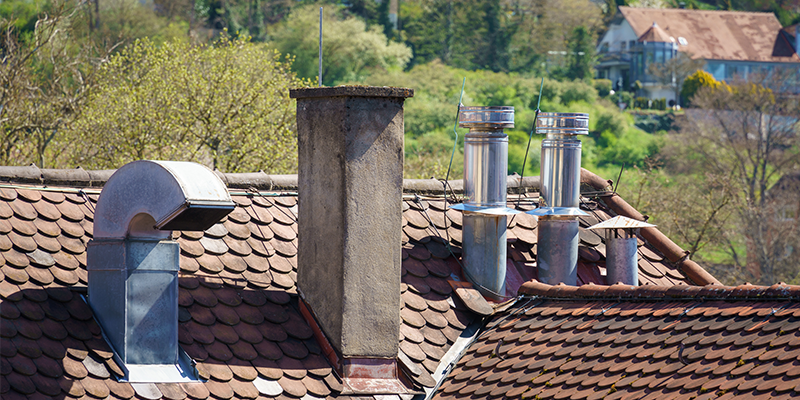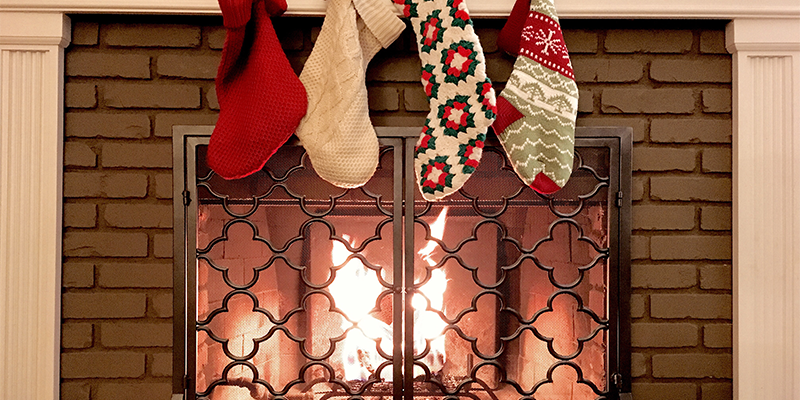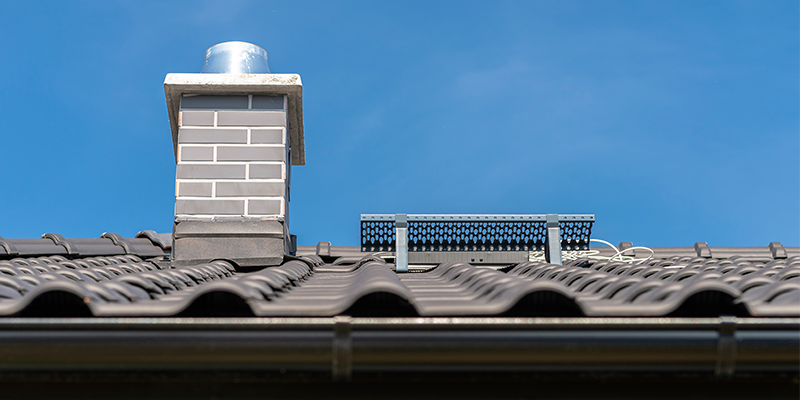Will Blocking My Chimney Prevent Heat Loss?

When cold weather strikes, it can be easy to underestimate its impact at first. However, soon your house will freeze, and you’ll have to resort to radiators. As we all know, an expensive option is why a lot of homeowners are now turning away from methods of heat creation, and instead looking at heat preservation.
Common places in the home through which heat can escape include doors, windows, and the roof, but another place that commonly allows for heat to escape is the chimney. Many homes no longer have chimneys. And those that do have mostly kept them around because of how stunning they look.
But does blocking a chimney prevent heat loss? Should you consider blocking your chimney to stop heat from escaping up it? And if so, what is the best way to do this while still maintaining the aesthetical appeal chimneys tend to offer homes? This guide will answer some of these questions, as well as other common queries regarding the process of blocking old or unused chimneys.
Contents
- Do Chimneys Cause Heat Loss?
- What is the Stack Effect?
- How Effective is a Draught Excluder?
- How Effective is a Chimney Balloon?
- How Effective is a Chimney Cap?
- Will I Need an Expert to Block My Chimney?
Do Chimneys Cause Heat Loss?

Many homes constructed before 1960 feature a fireplace and a chimney. While it should be noted that neither fireplaces nor wood burners can be considered particularly environmentally friendly, fireplaces do see use, particularly in the winter months when many enjoy the practical benefits and warm glow of a natural fire.
However, even when a fire is burning, a chimney will aid in the ejection of a lot of the warm air it generates. This is an unavoidable side effect of using a chimney. Not having a chimney would also be extremely dangerous, as it would allow the smoke and toxic fumes to remain. Wood burner chimney installations can be a little more effective at retaining the heat, but a lot of it is still lost.
It’s not just the heat from a fire that can get lost up a chimney; any heat created from a radiator, boiler, oven, or heater can also disappear up the stack. This means that even when not in use, a chimney can actively take heat out of your home. It’s little wonder therefore that, in these more trying times particularly, people are looking to save on their energy bills by blocking up their chimneys.
What is the Stack Effect?
How severe is the effect your chimney is having on heat levels in your home? This depends on something known as the stack effect, which actually relates not just to chimneys, but to airflow in and out of the building. Many factors come into play here, including the height of your home and the interior and exterior temperature difference. Your chimney size and width are other such factors.
If it’s winter and you have the heating on in a taller home, you’re going to experience a rather large stack effect – that means that a lot of air will go up your chimney, and as heat rises more effectively, the warmer air will be the first to go. As it leaves, however, it will need to be replaced, so cold air is dragged in from various places. The most common areas are the edges of doors and windows. The result is a noticeably colder home.
This is why the idea of blocking a chimney is so appealing to people. You will save money on your energy bills as you will be using less heating to keep your home cosy. You’ll also be proving more environmentally friendly by lowering your carbon footprint thanks to the drop in energy usage. If these results appeal to you, then it is time to start looking at blocking up your chimney.
How Effective is a Draught Excluder?
One of the most popular methods of keeping your chimney blocked is purchasing a draught excluder. These products are handy devices that can be fitted within the chimney or around the fireplace itself. They prevent warmer air from rising from the chimney and – crucially – stop cold air from coming in, which gives them their name. Draught excluders are present in many chimneys across the country.
Draught excluders are also amongst the least expensive chimney-blocking solutions, with some costing as little as £20. Installing one can potentially save a household up to five times that amount, with £100 a year saved in some cases. They come in multiple forms, including those made from wool as well as inflatable alternatives.
Some chimney draught excluders can be made to order – those in larger, more historical homes may have to choose this option anyway, as older fireplaces can prove much more complex, especially in bigger houses. These also tend to be made from wool, which is a highly breathable material that allows for ventilation to continue through it but prevents heat from escaping.
How Effective is a Chimney Balloon?
Chimney balloons are the same products as inflatable draught excluders, and instead of being made from wool like the majority of standard draught excluders, they are made from a tough yet flexible plastic that allows the product to be inflated. When full of air, the balloon fills up all the nooks and crannies of a chimney to prevent air from travelling through it as effectively.
With most chimney balloons, you have control over how much air is put into them. While you’ll want to pump it enough to prevent the majority of air from escaping through the chimney, completely filling the hole results in a build-up of damp and mould. Therefore, inflating it to the point that just a little air can make its way through in order to continue ventilation is the best approach to blocking up the chimney. Chimney balloons can be deflated and removed whenever you want to light a fire, so it doesn’t remove the ability to use your fire.
How Effective is a Chimney Cap?

A chimney cap is another popular option, and you can see chimney caps on many chimneys across the country. Primarily made from terracotta, chimney caps provide superior insulation and protection from birds, moisture, and draughts. However, these products are also vastly more expensive, and cost anywhere between £150 and £1,000, depending on the make, material, size, and labour costs.
You won’t be able to install a chimney cap yourself, which is a factor behind the high price – you’ll need to pay a professional to install the cap for you. This will ensure that the job is carried out safely and you get the best results. There are many professionals who specialise in chimney cap installation, so check with family and friends for recommendations. Also try to get three quotes at the very least before deciding on a tradesperson – if a price is particularly high or low compared to the others, it’s probably worth avoiding.
Will I Need an Expert to Block My Chimney?
Whether or not you need a tradesperson to come in a block your chimney for you will depend on the type of blocking technique you wish to use. Chimney caps are one of the main solutions to blocking a chimney, but they are also among the most difficult to install. Because of this, they will require an experienced professional, as well as the additional labour and material/equipment costs that come with the process.
Despite these extra costs, chimney caps are generally considered the most appealing solution to effectively blocking a chimney. You can also hire a tradesperson to install both chimney balloons and draught excluders. It should be noted however that these can be potentially installed by a well-prepared DIY enthusiast that has carried out the appropriate amount of research prior to carrying out the task.